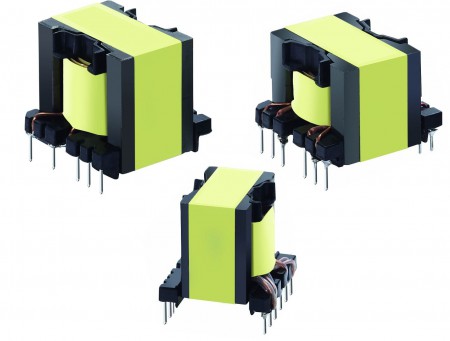Inverter transformers are voltage-fed type of power transformers. They are often known as electronic transformers due to their application in low scale power conversion. These inverter transformers are used where the DC power supply is available but AC input is required for a power-driven device. The inverter performs DC to AC conversion and further, the transformer can be used as a power transformer for a step up or step down applications, which is why they are considered special type performers. Due to power conversion and step-up-step-down possibilities, these voltage-fed transformers have become popular for several industrial applications. However, to utilize it, one must understand what the construction parameters and working principles to apply them to a suitable application. This post discusses those points.

A Brief Introduction to an Inverter Transformer
An inverter combines the concept of an inverter transformer and a power transformer. The inverter switches the current from direct current (DC) to alternating current (AC) by using semiconductor-based MOSFETs to switch the primary voltage. Depending on the turn-ratio, the transformers can step-up or step-down the voltage from the primary winding to the secondary winding. Generally, these inverter transformers are suited for 110 V or 220 V voltage inputs. Although they can be used for mains voltage DC to AC conversion, their use in applications can also be found in moderate load operations as well.
Since these inverter transformers are often custom-built, the specific design structure is not always apparent. However, the general construction, fundamental components, and the overall working principle of the inverter transformer remain consistent across all designs.
Fundamental Components of an Inverter Transformer
The following are the fundamental components of an inverter transformer.
- Transformer
- MOSFET
- Rectifiers
- Diodes
- Circuit breakers
- Operational Amplifiers
Construction of an Inverter Transformer
The following principles will help you understand the construction of an inverter transformer:
- Primarily, the inverter assembly consists of an integrated circuit, which acts as an oscillator. In some circuits, the integrated circuit is powered by stored energy from a capacitor.
- Metal oxide semiconductor field-effect transistors (MOSFETs) are integrated with the oscillator to switch the current from DC to AC without changing the frequency of the current. MOSFETs are ON/OFF type of electronic transistor switches that trigger the DC to AC switch.
- Further, MOSFETS can be connected in parallel to the center-tapped transformer. The AC current passes from MOSFETs to the primary winding of a transformer which further can be stepped-up or stepped-down according to power-driven device requirements.
Although this is the general construction, some additional components like diodes, circuit breakers, rectifiers can also be integrated into the inverter. The circuit breakers can be added for instant termination if the customized design demands that. Diodes are often used for process indication, monitoring, and control.
Working Principle of an Inverter Transformer
The working principle of an inverter transformer is quite simple as it combines inverter and transformer functionality. The following activities take place during the working of an inverter transformer.
- The inverter takes input from a DC power supply source or battery if it is stored energy. A series of MOSFETs in the inverter assembly acts as a switch for converting the current from DC to AC.
- As the MOSFETs are often connected in parallel to the center-taped the alternating current reaches the primary winding of a transformer. The transformer has a magnetic core around which the primary and secondary windings are wound. Due to the electromagnetic effect, the power transfers from the primary winding to the secondary winding. The voltage can be stepped-up or stepped-down.
- The AC current from the secondary winding of the transformer can then supply power to the load.
Common Applications of Inverter Transformers
After the discussion of inverter transformers, their construction, and the working principle, let us discuss where they can be used.
- Windmill power transmission centers
- Electronic control panels
- Elevator operating systems
- Photovoltaic grids
- Solar Panels
The list of applications for inverter transformers is long; however, the quality of the inverter transformer is very important as well. Therefore, you must source your inverter transformer from a trusted manufacturer like Custom Coils. The company is one of the leading manufacturers of custom-designed transformers.
